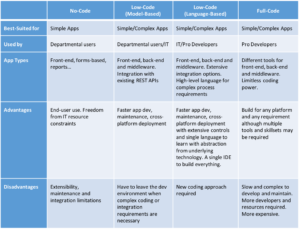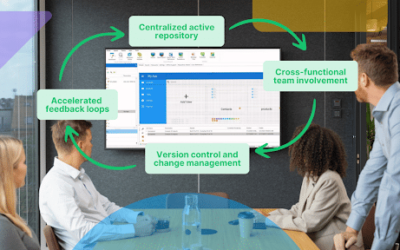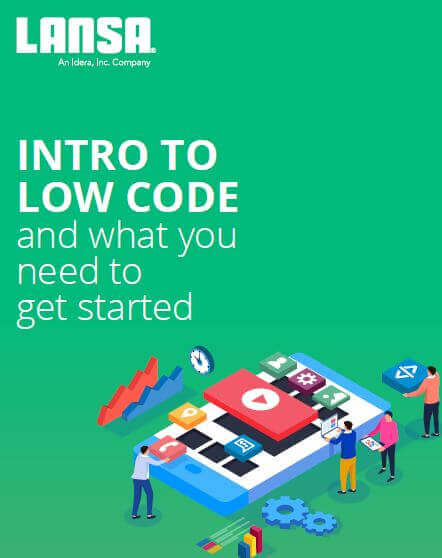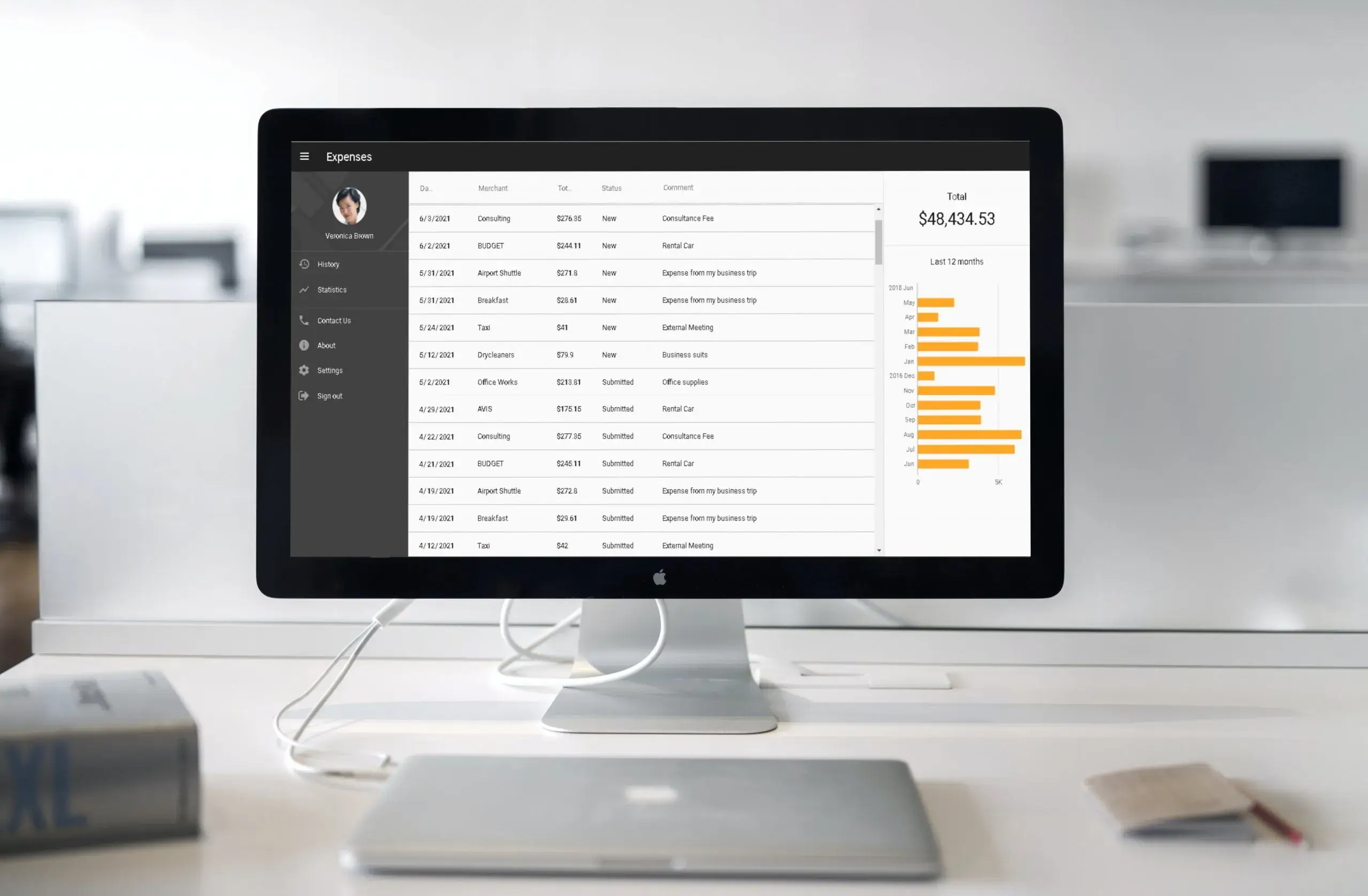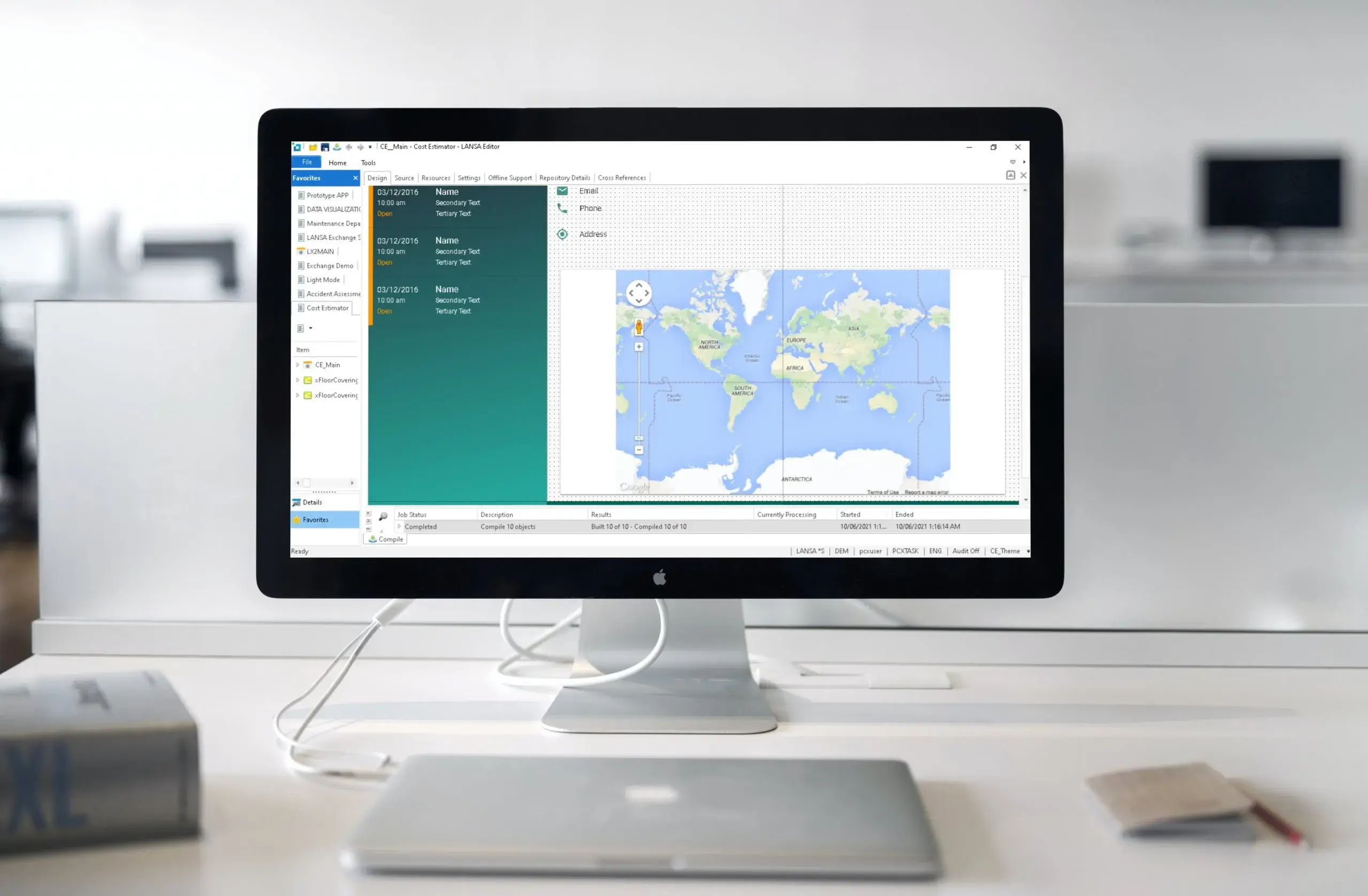What we know as ‘low-code’ is changing. The problem is application development is still too difficult, too expensive and requires too many resources. The low-code market is fragmenting as solutions are now offering different approaches to tackle this problem.
Right now, we’re seeing four categories that range from no-code to full-code. In this white paper, we explore the new spectrum of application development that is meeting the unique needs of businesses and IT departments.
Four Application Development Methods
- No-Code
- No-code development is designed for business users to get the applications they need when traditional developers are unavailable. It allows them to build simple applications for use by themselves or a limited number of additional users.
- Low-Code (model-based)
- Low-code (model-based) development spans simple requirements for business users through to more complex requirements needed to be undertaken by IT.
- Low-Code (language-based)
- Offers the control of full-code development while using low-code techniques to simplify development and integration. It removes the need to code in multiple programming languages and provides capabilities to build attractive and modern UI/UX (skills which many enterprises development teams lack).
- Full-Code
- Full-code development is the traditional way of building enterprise apps. It’s used by pro developers and has limitless potential for building apps when the right resources can be found.
Here’s a summary of how we see their suitability for different types of applications and users/developers.
Spectrum of Application Development Summary
To find out more, you can download a copy from LANSA.com. We’ve just published a new white paper that discusses this subject. In addition to describing the different categories, the paper also looks at where and when the different types of tools should be used and by whom, why you should select one tool over another and the advantages and disadvantages of each.



